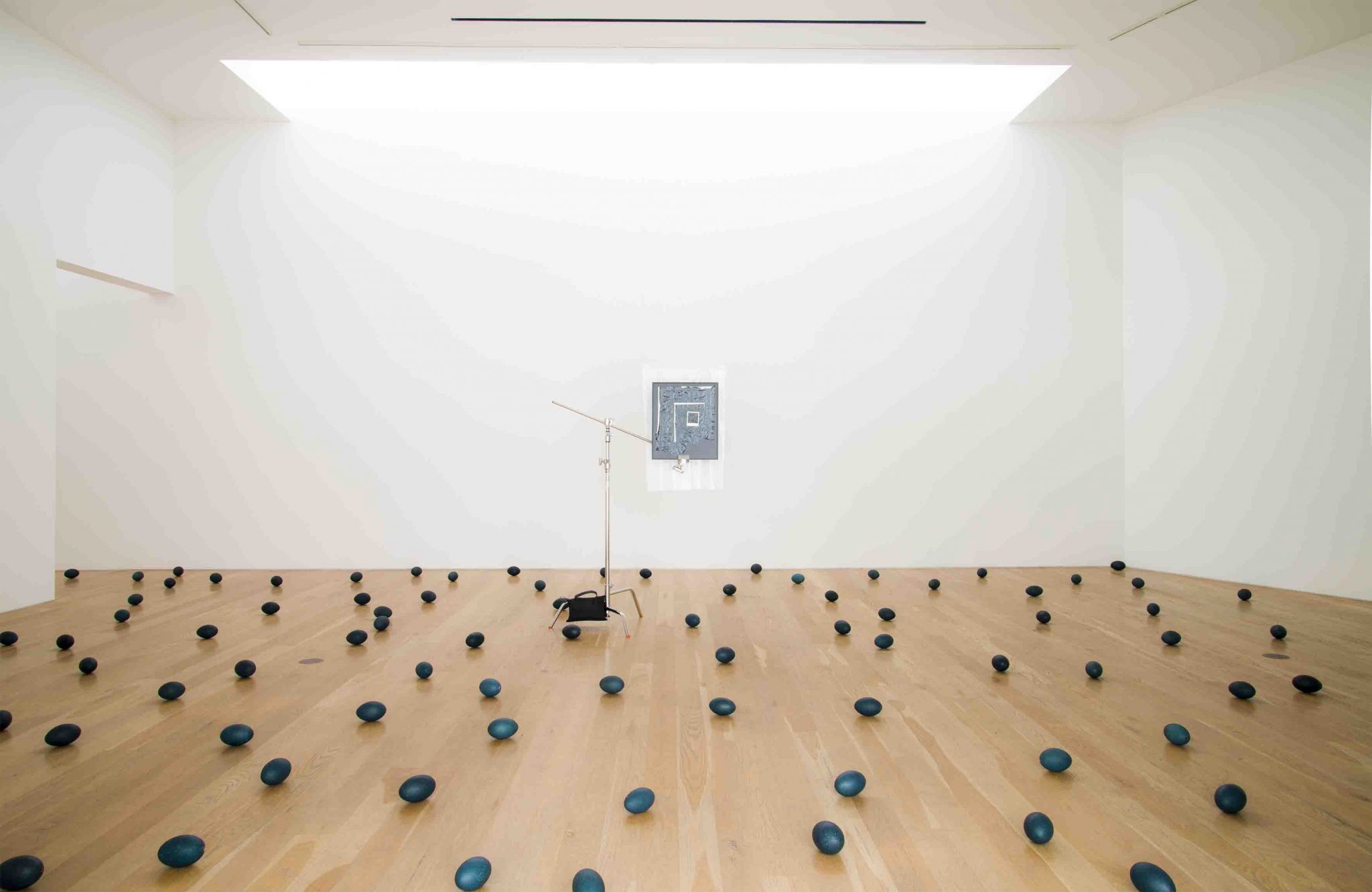Watch your step. Three hundred and fifty otherworldly eggs, coloured the deepest flecked serpentine green, speckle the polished blonde wood of the gallery’s floor and the grey concrete of its courtyard. Emptied out by a single piercing in the bottom of each, these scattered, sizeable eggs and their suggestive curves dreamily interrupt the spare space of this two-artist exhibition. The strange eggs (Emu, 2012–14) make thoughtless feet cautious, movement slow, awareness subtly heightened. Lacking their viscous ova, the shells transform from exotic breakfast or future emu into pure visual artefact. Plucked from their nests, they never lose their origin and preserve in their shapely, richly hued form that state of grace that nature so artlessly possesses.
All of Emilie Halpern’s work is like this. A pair of long copper lightning rods, almost seamlessly spliced end-to-end and verdigris with exposure, pokes from the ceiling, its single sharp point hovering a few feet from the ground. Washing over the scene, a two-disc recording plays the sound of waves from either the Atlantic or the Pacific. Some expert might be able to apprehend the difference, but the question of which ocean’s swells crest and ebb beguiles. The unknowability allows for a mysterious thrill, the epic power of either ocean lost in the lull of waves crashing. By a simple reframing, Halpern refreshes an obviously beautiful thing that has grown almost ignorable. At its best, her work extends the ethereal purity of James Lee Byars’s late constructions, though with a distinct bend towards natural phenomena.
With their chromed c-stands holding one or another part of his drawing’s framing devices, Andrew Cameron’s works stand like futuristic insects amid Halpern’s splay of eggs. The two etchings on inked steel in Bouquet (2014) reveal a supple wrist. One a standard fistful of flowers in a vase (lest we forget, the press release reminds us that flowers are the sex organs of plants), the other an undulating abstraction with more than a few cocklike protuberances. The drawing in detail on Husbands (2014) shows just two cloths hanging erectly in each other’s direction. A subtle, sexy gay poem worthy to share air with Felix Gonzalez-Torres’s Untitled (Perfect Lovers) (1991), where two identical clocks hang next to each other in exact synchronisation.
Nearby, a small framed photograph by Cameron captures a single perfect bangle standing precariously amid a crush of red velvet. On the other side of the wall the artist has carved a squarish hole the same size as the photo, haphazardly dressed with silver electrical tape, and with another bangle, rusted and snaggly, sitting inside – the framed photograph’s back glass reflects back just so behind the rough ring, and the refined beauty of the photographed tableau offsets the rough realness of its doppelg.nger.
Quietly at play here are sameness and difference, how things coalesce and divide, and how a simple reframing can make hushed tensions lively, an apt theme for this subtle pairing.
This article originally appeared in the October 2014 issue
